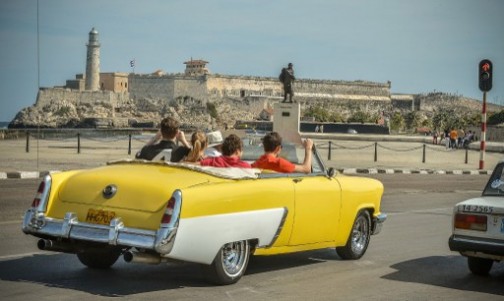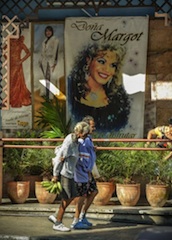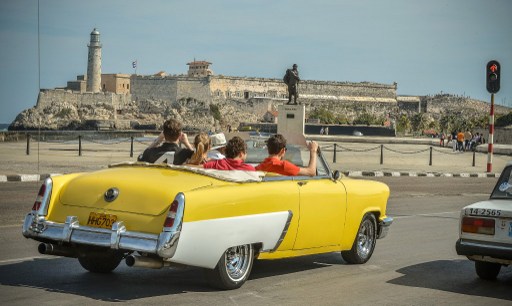22nd March, 2013
HAVANA(AFP) – Aging Chevys and Pontiacs are a familiar symbol of life in Cuba, but many of the vehicles clogging the communist island’s streets these days are top of the line and fresh from the showroom.
The recent startling appearance of gleaming Audis, Hummers and other high-end cars are but one sign of change in Cuba, where early hints of affluence can be seen after half a century of communist austerity.
Newlyweds are taking honeymoon getaways at Cuba’s five-star hotels.
Health clubs also are sprouting up, with memberships going for the once princely sum of $700 a year.
And suddenly, restaurants are serving up steaming plates of turtle meat, a prized and forbidden delicacy.

The newfound symbols of affluence come thanks in large part to President Raul Castro’s economic reforms, which are putting cash in the wallets of some ordinary Cubans and creating something akin to a nascent capitalism.
Castro, 82, came to power in 2008 — taking over from his ailing brother Fidel — and gradually began to overhaul island’s antiquated Soviet-style economy.
His goal is to liberalize Cuba’s economy and encourage more private entrepreneurship, but at the same time maintain a key role for the Cuban state through joint ventures.
Castro’s reforms have allowed Cubans for the first time to own mobile phones and computers, and to stay in swank hotels that previously had been reserved exclusively for foreigners.
In 2011, he let Cubans legally buy and sell homes and automobiles, and earlier this year, he loosened up strict travel restrictions.
But without question, one of the biggest changes has been to allow Cubans to work for themselves rather than the state.

Until then, the average income on this island of 11.1 million inhabitants was $20 per month.
After that reform went into effect, beauty salon, restaurants, appliance repair shops and untold other private businesses sprouted up like mushrooms, bringing pockets of new wealth to the island.
There now are about 400,000 independent contractors who work for themselves, and these newly affluent private entrepreneurs are discovering the pleasures of consumption, something that has eluded Cuba for five decades.
“Things have changed along since the start of these independent business people, one can see that right away,” a Havana travel agent told AFP.
Nowadays, it is no longer unusual to see BMWs or Mercedes cars cruising along Havana’s gritty streets, including many high-end vehicles bearing the tell-tale yellow license plates belonging to Cubans.
“Now there are Cubans who go on honeymoon in Varadero or in Los Cayos, the travel agent said, referring to two of Cuba’s most popular tourist beaches.
“It is the independent business people who have made this happen,” the travel agent said.
Another travel industry worker said that business has been booming since the reforms were put in place.
“In 2012, I sold $53,000 in travel packages to Cubans. I was really stunned by that number. Imagine, me, sitting in my little office, doing so much business entirely with Cubans.”

The travel agent also noted something of a trickle down effect of the wealth: “I realized that because some Cubans have much more purchasing power, there’s a lot more affluence.”
Meanwhile, a trainer at one private health club at a Spanish-run hotel in Havana told AFP that “more of my clients are Cubans than foreigners.”
Even the humble “paladar” — apparently as a result of the reforms — has gone upscale.
These family-run restaurants that emerged in the 1990s used to consist of a backroom in a private home, offering hearty fare impossible to find in Cuba’s economy distorted by rationing.
Now, paladares often occupy an entire house, elaborately decorated and offering imported wine and fancy fare, sometimes served by professional wait staff.
As it has for years, Cuba is also benefiting from wealth brought to the island from outside.
A day at a swank beach resort here costs about $200, and there are thousands of travelers who visit the island each year.
Many of the tourists are Cuban emigrants traveling to see relatives, and their numbers have increased since President Barack Obama relaxed restrictions making it easier for Cuban emigres to visit.
According to official data, a record 400,000 Cuban emigrants visited the island in 2012 and Cuban emigrants send about $2 billion each year to their relatives on the island.



